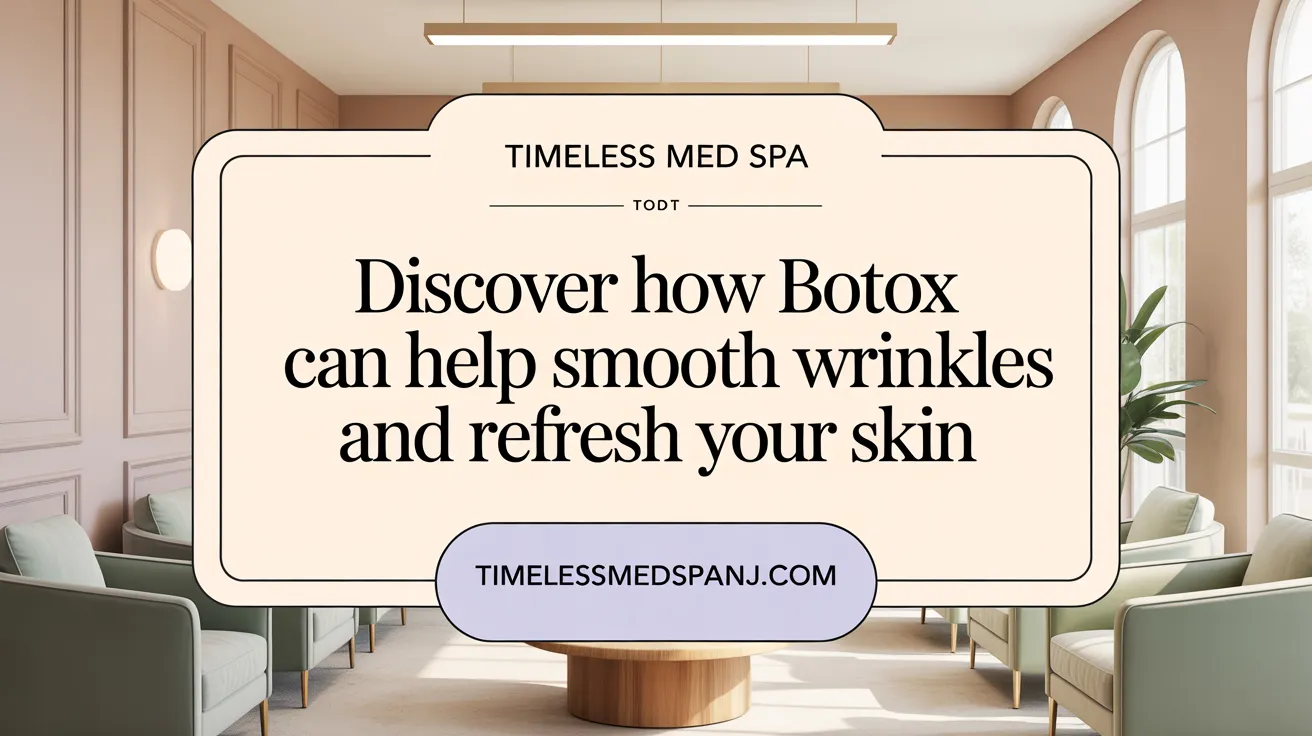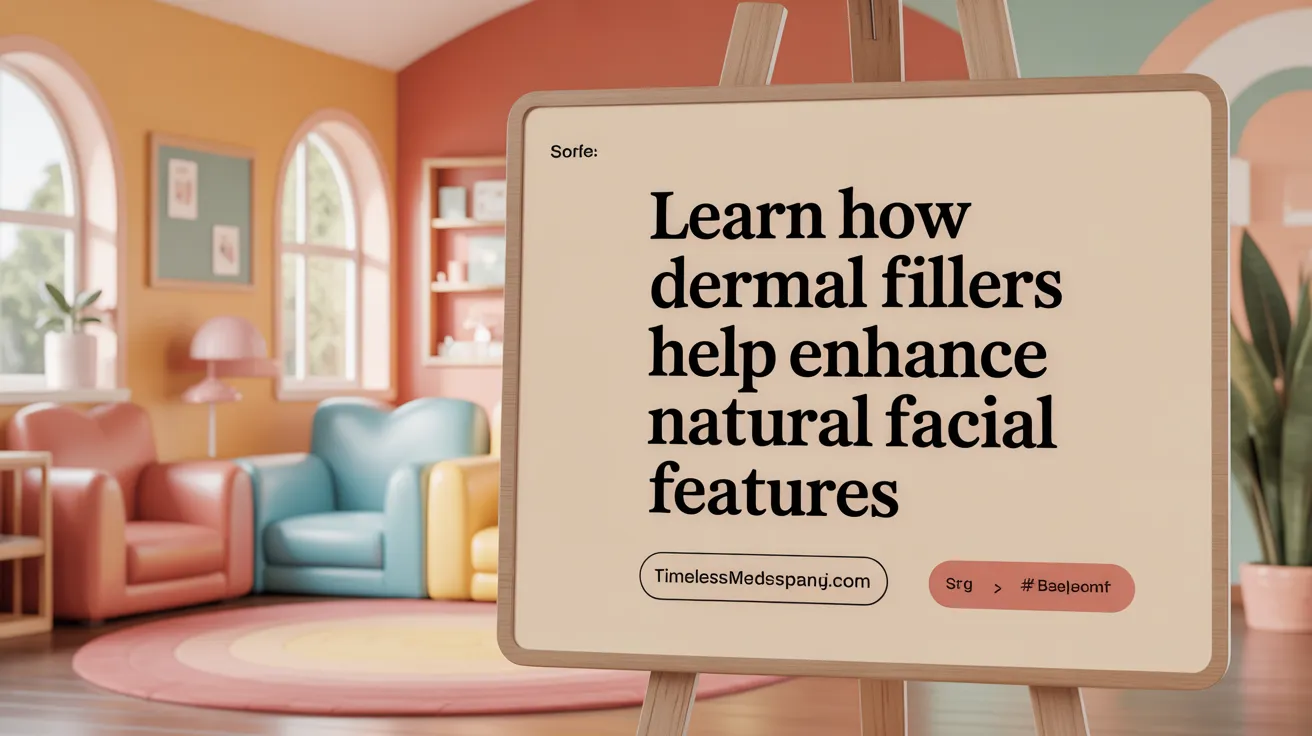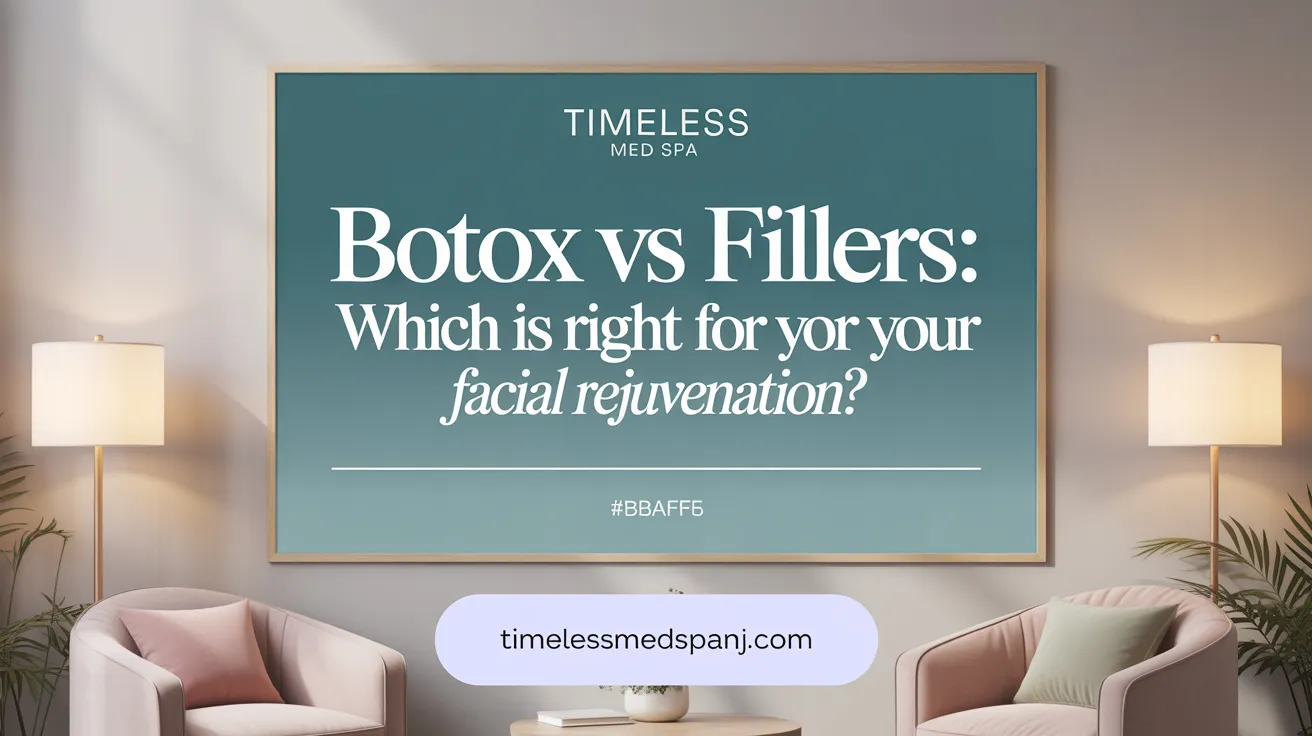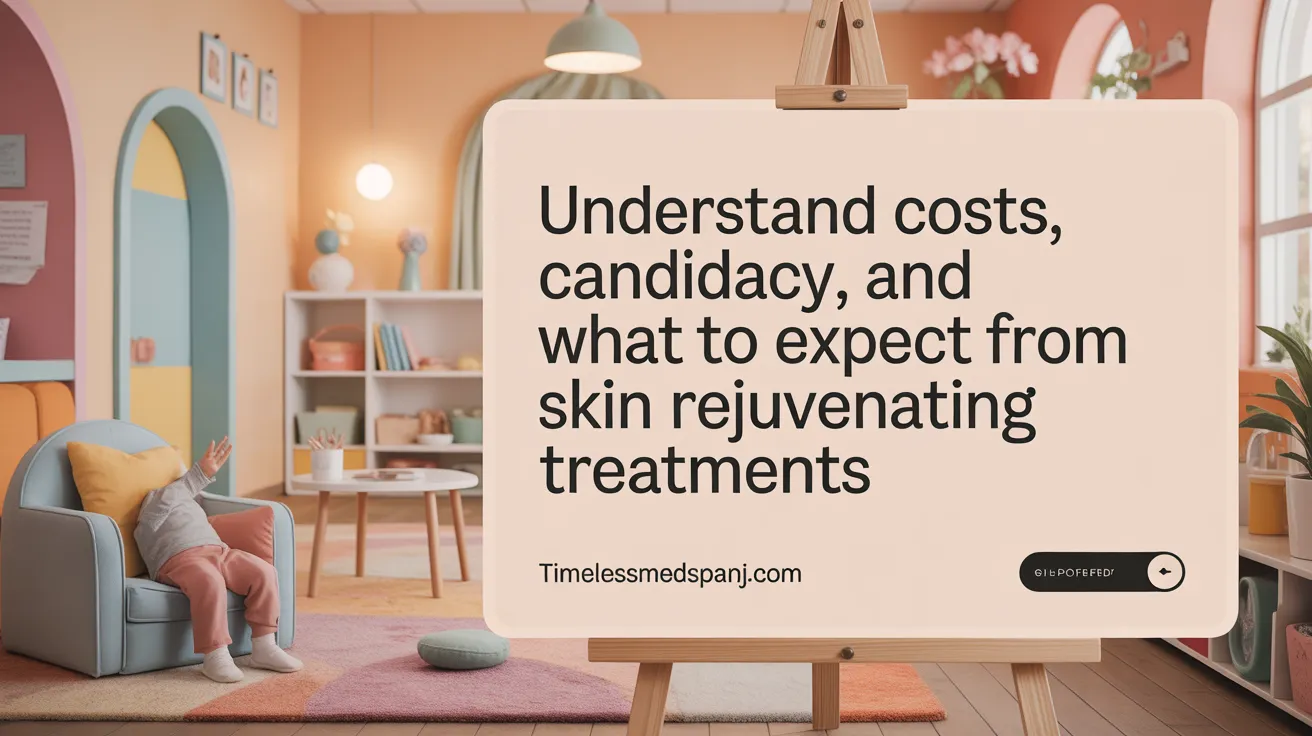Exploring Non-Surgical Solutions for Facial Rejuvenation
As the desire for youthful, smoother skin grows, many turn to non-surgical cosmetic treatments like Botox and dermal fillers. Understanding how these treatments work, their benefits, safety, and what to expect can empower you to make informed decisions about facial rejuvenation. This comprehensive guide reveals everything you need to know about Botox and fillers to enhance your natural beauty without surgery.
How Botox Works to Smooth and Rejuvenate Skin

How does Botox work to make skin look smoother and younger?
Botox is a purified form of botulinum toxin that is injected into specific facial muscles. Its main function is to block nerve signals that instruct muscles to contract. When these signals are inhibited, the targeted muscles relax.
This relaxation reduces the appearance of dynamic wrinkles, which are lines caused by repeated muscle movements. Common trouble spots include frown lines, crow’s feet around the eyes, and horizontal forehead lines. As the muscles soften, the overlying skin becomes smoother, making facial lines less noticeable.
The effects of Botox typically start to show within a few days and last for about three to four months. Regular treatments help maintain a youthful, refreshed appearance. Overall, Botox offers a quick and non-invasive way to diminish wrinkles, resulting in smoother, more youthful skin.
Treatment areas for Botox
Botox is most commonly used to treat areas where dynamic wrinkles appear due to muscle activity. The typical zones include:
- Forehead lines
- Frown lines between the eyebrows (glabellar lines)
- Crow’s feet around the eyes
- Bunny lines on the nose
- Lip lines and chin dimpling
- Neck bands
In addition to cosmetics, Botox can also be used therapeutically for conditions like excessive sweating (hyperhidrosis), muscle spasms, and migraines.
Duration and onset of Botox effects
Results from Botox are often seen gradually, usually within 3 to 7 days after treatment. Full results tend to be visible in about two weeks. The initial smoothness and reduction in wrinkles typically last for three to six months. To maintain desired effects, repeat injections are recommended, often every few months.
Typical procedure and its quick administration
The Botox treatment process is straightforward and quick. After a consultation to identify target areas, a trained professional injects tiny amounts of Botox with a fine needle into specific facial muscles.
The entire procedure generally takes between 10 to 30 minutes. Because the injections are minimally invasive, patients often experience little discomfort. Post-treatment effects, such as mild swelling, redness, or bruising, are temporary.
People appreciate this as a “lunchtime procedure” because of its brevity and minimal downtime, making Botox a desirable option for those seeking quick, effective facial rejuvenation.
Understanding Dermal Fillers: Restoring Volume and Contours

What are dermal fillers and what are they made of?
Dermal fillers are gel-like substances injected beneath the skin to help restore lost volume, smooth out lines, and improve facial contours. They are primarily made from hyaluronic acid, a substance naturally found in the body that retains moisture and adds volume. Other types include calcium hydroxylapatite, which stimulates collagen production, poly-L-lactic acid (Sculptra), and polymethylmethacrylate (PMMA), which contains permanent microspheres. These options provide varying durations of effects and tailored solutions for different skin aging concerns.
What common treatment areas are targeted by dermal fillers?
Fillers are versatile and can be used on many parts of the face. The most common areas include cheeks, to lift and restore volume; lips, for plumping and shape enhancement; nasolabial folds, to soften creases from the nose to the mouth; and under-eye hollows, for a more youthful look. They are also used for chin and jawline contouring, smoothing smile lines, and improving facial symmetry.
How do fillers improve facial appearance and smooth wrinkles?
Fillers work by physically adding volume beneath the skin, plumping thin lips, softening deep creases, and enhancing facial contours. They provide immediate visual results, making the skin look more youthful. By restoring lost fullness, fillers reduce the appearance of static wrinkles—lines that are visible even when the face is at rest—and improve overall facial harmony.
What are the different types of dermal fillers and how long do their effects last?
Different fillers serve various purposes and last for different periods. Hyaluronic acid fillers typically last from 6 to 12 months, with some like Juvederm and Restylane. Calcium hydroxylapatite (Radiesse) lasts about a year and stimulates natural collagen. Poly-L-lactic acid (Sculptra) can last more than two years by promoting collagen growth. Permanent options like PMMA microspheres are used in specific cases. The choice depends on the treatment area, desired longevity, and patient needs.
| Type of Filler | Common Brands | Duration of Effects | Additional Benefits |
|---|---|---|---|
| Hyaluronic Acid | Juvederm, Restylane | 6-12 months | Reversible; infused with lidocaine for comfort |
| Calcium Hydroxylapatite | Radiesse | About 12 months | Stimulates collagen production |
| Poly-L-lactic Acid | Sculptra | Over 2 years | Collagen stimulator; gradual results |
| PMMA (Polymethylmethacrylate) | Bellafill | Permanent | Corrects deep wrinkles; requires expert injection |
Knowing the right filler and treatment plan can help achieve natural, long-lasting rejuvenation, making dermal fillers a popular choice in non-surgical facial enhancement.
Botox Versus Fillers: Comparing Uses, Effectiveness, and Suitability

What are the main differences between Botox and fillers in treating wrinkles?
Botox and dermal fillers serve different purposes in facial rejuvenation. Botox is a neuromodulator derived from botulinum toxin that relaxes the muscles responsible for dynamic wrinkles caused by movement. It effectively smooths lines such as forehead wrinkles, frown lines, and crow's feet. Fillers, on the other hand, are gel-like substances injected beneath the skin to restore lost volume, smooth static wrinkles, and enhance facial contours. They are used for issues like sunken cheeks, lip plumping, and deep lines that are visible even when the face is at rest.
Which areas are best suited for Botox versus fillers?
Botox is most effective on upper face areas impacted by muscle movements, including forehead lines, between the eyebrows, and around the eyes. Fillers excel in areas requiring volume restoration or contouring, such as cheeks, lips, nasolabial folds, and under-eye hollows. They also help define facial features like the jawline and chin.
How do their duration and maintenance requirements compare?
The effects of Botox typically last three to six months, with regular treatments needed for ongoing results. Fillers vary based on the product: hyaluronic acid fillers last approximately 6 to 12 months, while longer-lasting options like Radiesse can endure up to 18 months. Sculptra may last up to two years. Regular touch-ups are essential to maintain the desired look.
Can Botox and fillers be combined for better results?
Yes, combining Botox and dermal fillers offers a comprehensive approach to facial rejuvenation. Using both treatments can address multiple signs of aging — Botox relaxes muscles to reduce dynamic wrinkles, while fillers restore volume and enhance contours. This combination often results in a natural, youthful appearance with minimal downtime.
| Treatment Type | Typical Duration | Common Areas | Main Benefit |
|---|---|---|---|
| Botox | 3-6 months | Forehead, crow's feet, frown lines | Reduces muscle activity to smooth wrinkles |
| Fillers | 6 months - 2 years | Cheeks, lips, under-eyes | Restore volume, shape facial features |
| Combined Approach | Varies | Multiple facial areas | Achieve comprehensive facial rejuvenation |
Safety, Risks, and Post-Treatment Care for Botox and Fillers
 When considering Botox and dermal fillers, understanding safety protocols and potential risks is crucial. Common side effects include mild swelling, bruising, redness, and tenderness at injection sites, which usually resolve within a few days. Rare complications can occur, such as filler migration, adverse allergic reactions, or vascular occlusion, especially if treatments are not performed by experienced professionals.
When considering Botox and dermal fillers, understanding safety protocols and potential risks is crucial. Common side effects include mild swelling, bruising, redness, and tenderness at injection sites, which usually resolve within a few days. Rare complications can occur, such as filler migration, adverse allergic reactions, or vascular occlusion, especially if treatments are not performed by experienced professionals.
Choosing a qualified provider significantly reduces these risks. Licensed, board-certified practitioners have the training necessary to administer these injections safely and effectively. They understand facial anatomy thoroughly and tailor treatments to each individual, ensuring natural-looking results while minimizing adverse events.
Post-treatment guidelines are vital for optimal results and safety. For Botox, the 4-hour rule is highly recommended. Patients are advised to remain upright and avoid lying down, bending over, or applying pressure to the treated areas for at least four hours after the procedure. This helps keep the toxin localized in the targeted muscles, reducing the risk of unwanted spread that could lead to asymmetry or drooping.
During this period, avoiding activities such as massaging the face, vigorous exercise, alcohol consumption, blood-thinning medications, and exposure to heat sources like saunas or hot tubs is advised. These precautions help prevent complications and enhance the longevity of the results.
Minimizing risks like filler migration involves procedures performed by experienced clinicians utilizing proper injection techniques. Patients should also adhere to post-treatment care instructions, including avoiding excessive facial movements immediately afterward and staying well-hydrated.
In summary, safe Botox and filler treatments hinge on expert administration and diligent post-treatment care. Following instructions like the 4-hour rule and avoiding certain activities can preserve the effectiveness of the procedures and prevent uncommon but serious side effects.
| Aspect | Details | Additional Notes |
|---|---|---|
| Common side effects | Bruising, swelling, redness | Usually temporary, resolving within days |
| Rare complications | Filler migration, allergic reactions, vascular issues | More likely with unqualified providers |
| Role of qualified providers | Essential for safe, effective treatment | Experience and certifications matter |
| 4-hour rule for Botox | Remain upright, avoid pressure or lying down for 4 hours | Helps localize toxin, prevents unwanted spread |
| Post-treatment tips | Avoid massaging, heat exposure, vigorous activity | Maximize results, reduce side effects |
Understanding these safety considerations ensures a positive experience with minimally invasive facial rejuvenation methods.
Considering Age and Generational Perspectives on Botox and Fillers
Why do some people avoid Botox after age 65?
Many individuals over 65 choose to avoid Botox due to concerns about its effectiveness and appropriateness for older skin. While Botox can be safely administered to seniors in good health under professional supervision, the results may differ based on skin elasticity and existing facial features. Older skin often exhibits more laxity or pigmentation issues, which may respond better to other rejuvenation options like fillers or laser treatments. There are also worries about side effects such as increased dryness or local reactions, which could be more problematic in an older population. Ultimately, personalized assessment during a consultation is essential in determining whether Botox is suitable for anyone over 65.
What are the reasons behind Gen Z's hesitation toward Botox treatments?
Generation Z tends to be more cautious about cosmetic procedures like Botox. Their attitudes are shaped by a focus on natural beauty, skin health, and long-term wellness, not just quick fixes. Many in this age group prefer to invest in skincare routines that promote regeneration and vitality, perceiving less need for invasive procedures. Greater awareness of potential risks, side effects, and the importance of maintaining natural skin also contribute to their hesitation. Additionally, their proactive approach to sun protection, hydration, and overall skin care reduces the perceived necessity of Botox for early wrinkle prevention. Overall, Gen Z favors a more conservative and health-conscious approach to facial aesthetics.
Suitability of treatments based on age and skin condition
Choosing the right treatment depends heavily on individual age and skin condition. Younger patients with minimal static wrinkles may benefit from preventive treatments like Botox to ward off future lines. In contrast, older adults with more pronounced wrinkles or volume loss could see better results with a combination of Botox and dermal fillers. For those with significant laxity, laser therapies such as Fraxel may be more appropriate to improve skin tone and texture.
It is important to consult with a qualified provider who can evaluate skin health, elasticity, and specific concerns. This personalized approach ensures that treatments align with age-related changes and individual aesthetics, promoting natural and satisfying results.
Importance of personalized consultations
A tailored consultation is crucial for determining the most suitable treatment plan. Qualified professionals assess skin type, aging signs, health history, and personal goals. This individualized approach allows for selecting the right combination of Botox, fillers, or laser therapies.
Personalized plans help maximize results, minimize risks, and address unique needs, whether it’s smoothing dynamic lines with Botox, restoring volume with fillers, or combining treatments for comprehensive rejuvenation. By prioritizing personalized care, patients can achieve natural-looking results that enhance their features at any age.
Cost, Candidacy, and What to Expect from Botox and Filler Treatments

Factors influencing the cost of treatments
The price of Botox and dermal fillers varies based on several factors such as the treatment area, the type and amount of product used, and the geographic location of the provider. Generally, Botox costs depend on the number of units needed, which correlates with the extent of muscle activity and treatment areas. Fillers vary in price depending on the substance used, with hyaluronic acid fillers typically costing less than calcium hydroxylapatite or poly-l-lactic acid options. Additional costs may include consultation fees and post-treatment care.
Criteria for candidacy and the importance of consultation
Good candidates for Botox are individuals seeking to reduce dynamic wrinkles caused by muscle movement, such as forehead lines, frown lines, and crow's feet. Filler candidates often experience volume loss in areas like cheeks, lips, or under-eye hollows, and want to restore fullness or improve facial contours. A comprehensive consultation with a licensed professional is essential to assess skin type, health history, and aesthetic goals. This helps ensure safe, effective results and allows for personalized treatment planning.
Typical treatment process and downtime
The procedures usually take about 15-30 minutes, making them convenient daytime treatments. During a session, the clinician will inject Botox into targeted muscles and fillers beneath the skin, often with a fine needle. Minimal discomfort is common, and no significant downtime is required. Temporary side effects may include mild swelling, redness, or bruising, which usually resolve within a few days. Patients can typically resume normal activities immediately after treatment.
Expected results and maintenance recommendations
Botox results generally appear within 3-7 days, peaking around two weeks, with effects lasting approximately 3-4 months. To maintain a youthful appearance, ongoing treatments are recommended, with touch-ups every few months. Dermal fillers can last longer, from 6 months to 2 years, depending on the type. Regular maintenance ensures sustained, natural-looking results and helps optimize skin rejuvenation over time.
Making an Informed Decision for Youthful, Smoother Skin
Botox and dermal fillers offer effective, non-surgical solutions for achieving a more youthful, refreshed appearance with minimal downtime. Understanding how each treatment works, their benefits, safety considerations, and suitability based on individual age and skin condition empowers you to choose the right approach. Always consult experienced, board-certified professionals who tailor treatments to your unique facial structure and aesthetic goals. With proper care and maintenance, Botox and fillers can help you enjoy smoother, younger-looking skin and confidently embrace a radiant, natural beauty.
References
- Botox and Fillers: The Ultimate Guide to Achieving Youthful Skin
- The Ultimate Guide to Fillers and Botox - Skincredible Dermatology
- Botox vs. Fillers: Which One is Right for You?
- Achieving Youthful Skin with Botox Injections | Dr. Kirk Lozada
- Ultimate Guide to Botox, Fillers, and Injectables
- Botox 101: How to Achieve Smooth, Youthful Skin - Plano Plastic Spa
- Injectable Dermal Fillers Guide | ABCS
- The Ultimate Guide to Dermal Fillers and Botox: Your Go-To Non ...
- Botox vs. Fillers: Understanding the Best Choice for Youthful Skin
- Botox and Dysport – Your Complete Guide to Smoother, Younger ...
